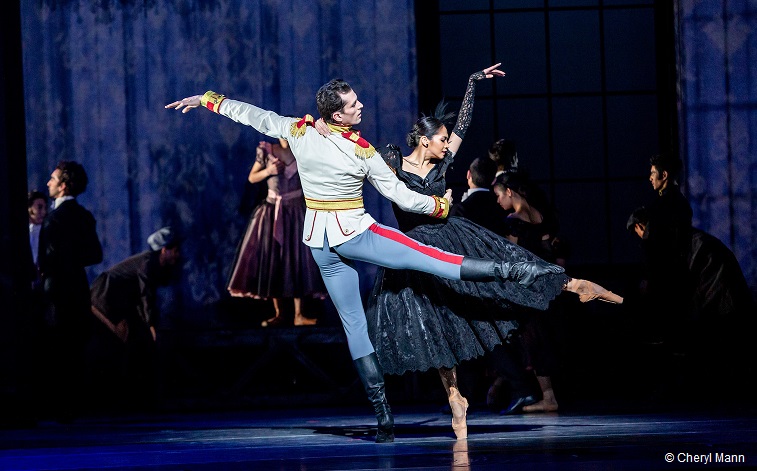
A TIMELESS HEROINE FOR OUR TIMES
BERKELEY, CA—-“Anna Karenina” may stem from 19th-century literature, but she is very much a woman of our era, led by her heart, for which she is condemned by a starchy old-line society.
Her tale has been taken up by many ballet choreographers since the middle of the past century, none of them more brilliant than Yuri Possokhov, whose mellifluous flow of major-production dancers in his five-year-old “Anna” more than compensates for his insatiable thirst for scenelets—13 of them in all, some totally irrelevant to the action at hand.
Whichever version draws you in best, “Anna” ranks alongside John Cranko’s “Eugene Onegin” among the foremost evening-length story ballets since World War Two, both based on Russian literary themes, both love stories gone awry. “Anna” however has the show-stopping ending as she commits suicide stepping before a speeding locomotive. That makes for a gripping and dramatic finale, bringing down the curtain in some versions (including a San Jose production a generation ago).
Chicago’s Joffrey Ballet and its 47 dancers brought “Anna” to Zellerbach Hall to play before sold-out audiences, led by the inspiring ballerina from Brazil, Amanda Assucena, in the title role. Assucena was a wonder in the part, supremely expressive in her acting and dazzling in her dance, with the most supple of bodies, able to bend and twist ad infinitum without breaking. The role is a tour de force, with multiple pas de deux, even a pas de trois where she is caught between two rival men right after intermission: the lover Vronsky and the iron-fisted husband Karenin (Edson Barbosa).
If Vronsky (José P.C. Cuevas) is emotionally aloof, he too dances up a storm and with prodigious strength provides countless lifts in this Old-Russian setting.
A backup love story brings on the charming Levin-Kitty pair (Xavier Nuñez, Valeria Chaykina).
Unlike many elaborate touring productions leaning heavily on projections, the Possokhov/Joffrey version calls on elaborate stage machinery and scene changes, complete to “nailing down” railroad rails and ties for key episodes at the station.
In Possokhov’s concept, some of his most brilliant choreography occurs in a throw-away scene where Karenin presents legislation before a group of automaton-like politicians (how timely in 2024!). And while there are repeated ball scenes with eight nimble couples, his peasant/harvest finale is totally irrelevant, coming after Anna’s demise.
Adding to the Russian flavor of the two-hour evening were selected songs in Russian, assertively sung by mezzo Lindsay Metzger of Chicago. If they were by the evening’s composer, Ilya Demutsky, they made up some of his best work; the blustery, ponderous score however will draw few plaudits from this reporter.
BALLET POSTSCRIPTS—Possokhov had been a lead choreographer and dancer with the San Francisco Ballet during Helgi Tomasson’s tenure. He comes from Luhansk, Ukraine. The story stems from Leo Tolstoy’s 1878 novel, “Anna Karenina” (with accent on 2nd syllable).
JOFFREY BALLET, in Possokhov’s “Anna Karenina,” March 15-17, seen 16th, at Zellerbach Hall, 2 hrs., one intermission, auspices of Cal Performances. For info: (510) 642-9988, or www.calperformances.org.